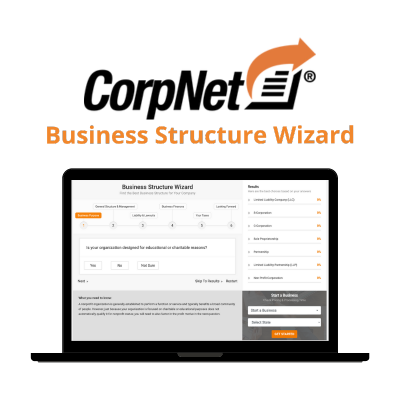It’s estimated that a third or more of e-commerce brands use dropshipping as a way to provide products to customers. If you’ve been thinking about starting an online store but don’t want to deal with the costs and hassle of maintaining inventory, you may find the dropshipping business model a viable approach. Ready to learn more about dropshipping as a way to fulfill customer orders? Let’s talk about what it is, some points to consider about the business model, and how to start a dropshipping business.
What is Dropshipping?
Dropshipping is an order fulfillment approach that enables merchants (usually those with online stores – i.e., e-commerce websites) to sell products to customers. Rather than producing, packaging, storing, and shipping products themselves, dropshipping merchants order products from third-party suppliers or manufacturers. Those third parties maintain the product inventory and fulfill orders, sending products directly to the dropshipping businesses’ customers.
The typical dropshipping process goes something like this:
- A customer goes online and buys a product from an e-commerce merchant’s website.
- The e-commerce merchant sends the customer’s order information to the dropship supplier or manufacturer (with whom they have a contractual agreement).
- The supplier or manufacturer pulls the product from its inventory, packs the product, and ships the product to the customer.
Customers usually don’t know that the products they ordered were shipped by someone other than the dropshipping merchant.
Several advantages to starting and running a dropshipping business include:
- Fewer upfront funds required to launch – Traditional retailers must buy inventory in advance to keep it in stock to fulfill their customers’ orders. Those upfront costs can really add up. But dropshipping merchants pay for products only after their customers order them. So, the dropshipping model can allow entrepreneurs to realize their business dream even if they don’t have much capital to work with from the start.
- Freedom to work the way you want – Businesses using the dropshipping model aren’t bogged down with the operational complexities of running a warehouse. They can manage their company from anywhere, anytime with a laptop and internet connectivity. This can be especially attractive to people who want to start an online retail business but who aren’t quite ready to give up their day jobs.
- Opportunity to offer a wider variety of products – Because they don’t have to buy products in advance, dropshipping businesses have an opportunity to provide a greater variety of options to their customers. They can diversify their offerings, usually with minimal financial risk.
As with any type of business, operating as a dropshipping business has its disadvantages too:
- A competitive marketplace – Because of the perks I listed above, many people are attracted to the dropshipping business model. Many online retailers—including some major players—are already in the space, so it’s a highly competitive landscape.
- Marginal profit margins – Lots of competition means dropshipping merchants may find themselves in pricing wars, aiming to offer the lowest price to attract buyers. That can lead to some rather slim profit margins. So, while the overhead costs of starting a dropshipping business are low compared to traditional online retail, the profits may be lower, too.
- Lack of supply chain control – Because product suppliers and manufacturers handle the logistics of maintaining inventory and sending orders, dropshipping merchants have little control over the fulfillment process. However, they still have responsibility for dealing with their customers when order fulfillment problems arise. So, when a product is on backorder, the wrong product gets sent, an order gets shipped late, or an order goes to the wrong location, the dropshipping business will feel the heat even though it’s not their fault.
Dropshipping Businesses Profitable?
The average profit margin for dropshipping is between 15-20%. The profitability of your dropshipping business will depend on the products you sell, the wholesale costs offered by your suppliers and manufacturers, the prices customers will be willing to pay for your products, the volume of products you sell, and all of the other costs associated with starting and running your business.
Some of the expenses that companies face when starting a dropshipping business face include the following:
- Computer
- Website design, development, web hosting, and maintenance
- eCommerce software platform
- Phone
- Internet access
- Product costs
- Credit card fees
- Taxes
- Marketing and advertising
These are just a sampling of what to expect!
Before jumping into starting a dropshipping business, I recommend doing a thorough feasibility study to assess profitability.
Will I Need to Borrow Money to Get Started?
This depends on your financial situation. Starting an online retail business that does fulfillment via dropshipping comes with fewer costs than owning inventory and preparing orders yourself—but it’s not cost-free.
Entrepreneurs who don’t have the startup funds necessary for things like website development and other essentials may need to consider finding sources of financing, such as:
- Your own savings or retirement account
- Friends and family
- Business loans
- A business line of credit
- Angel investors
- Crowdfunding
It’s a good idea to write a business plan before reaching out to potential lenders. Most will ask to see one so that they understand the opportunities and risks involved.
What Should My Dropshipping Business Sell?
Some entrepreneurs have a specific interest that leads them to start a dropshipping business, while others are open to any possibility. The decision of what to sell online will ideally come from considering profitability as well as a niche. How to start a successful dropshipping business begins with finding the right products based on both profit potential and your interests and expertise. Online retailers can provide exemplary customer service if they know their products extremely well. That in-depth product understanding can help differentiate them from their competitors.
One way to evaluate consumers’ needs for specific products and determine how much competition is out there is to do some keyword research. Google’s search results page will show you the number of search results that turn up for the keywords that relate to your product. That will allow you to see what companies are ranking highly in online searches when customers type in the keywords. You can find information about keyword search volume (how many times people typed in those keywords, presumably with interest in buying products) by using tools such as Google Trends, SEMrush, KW Finder, Moz, and Wordstream.
Most dropshipping experts advise being wary when selling commodities that are widely available offline. Products that everyone needs and can find and pick up at nearly any physical retail location for a reasonable price may not be attractive to customers online—for example, toothpaste, light bulbs, screwdrivers, and other practical items. However, there may be variations of those or other commodities that will appeal to certain audiences. For instance, people looking for a gift for a handyman (or woman) in their family may search online for where they can order a screwdriver that has their relative’s name laser-engraved on it.
Just be careful to research and verify online demand for the products you’re considering selling. If keyword research indicates there is hardly any competition for a type of product, it might be a warning sign. The costs to manufacture or ship the product might be too high to allow reasonable profitability or some other reason may be at play.
Ultimately, think about what you want your online brand to be known for, and research what products will sell and how profitable they will be.
How Can I Compete With Other Sellers?
Online retailers face some heavy-duty competition, including Amazon, Wayfair, Walmart, and other well-known brands. Starting a dropshipping business requires finding ways to set yourself apart from other online stores. Beware of getting into price wars. The lower you sell your products, the less profit you’ll make. In some cases, you may be able to make up for that lower revenue per unit because more people might buy your products due to the attractive price tag. However, larger sellers have the benefit of more buying power and pricing flexibility. It can be very difficult (or even impossible) to undercut their prices.
Some ways to make your business stand out include:
- Distinctive branding (logo, name, etc.)
- Superior customer service
- Superior knowledge and expertise about your products (i.e., becoming seen as an authority in your niche)
11 Steps to Launch Your Dropshipping Business in the United States
The steps for starting a dropshipping business can vary from state to state. Let’s explore the most important steps you need to get your new dropship venture moving.
1. Decide on a Business Name
Realize your business name will be one of your most important branding assets.
After deciding on the business name you want to use, check to make sure it’s available in your state by conducting a corporate name search. A trademark search will help determine if the business name is available all across the United States. This is important if your company will be registered in more than one state.
Because an e-commerce business’s lifeblood is its website, it’s also critical for dropshipping merchants to secure the domain name and URL they wish to use for their online store.
2. Determine Your Business Structure for Your Dropshipping Company
The business entity type a dropshipping business chooses will affect its taxes, its owners’ personal liability for business debts, and the formalities involved in staying legally compliant.
Here’s an overview of the most popular business structures:
- Sole Proprietor or Partnership – Operating a business as a sole proprietor means there’s no legal or financial separation between the business and the owner’s personal assets. The business owners are wholly responsible for any lawsuits against or debts of the business. Taxes related to business activities are paid by the business owner and reported on the business owner’s personal income tax returns. All business profits are subject to federal income tax and self-employment (Social Security and Medicare) taxes.
- Limited Liability Company – An LLC creates a legal shield between the business and the business owners (called “members”), while still treating them as the same tax-paying entity. If someone sues the LLC or it cannot pay its debts, LLC owners’ personal assets are protected. For tax purposes, an LLC is treated as either a sole proprietorship or partnership, with all business tax obligations flowing through to the owners’ personal tax returns.
- Corporation – A corporation (also known as a C Corp) is a separate legal and tax-paying entity from its owners (called “shareholders). Corporations offer the most liability protection to business owners. Corporations file their own income tax returns and pay tax on business profits at the corporate income tax rate. You’ll hear the term “double taxation” used when describing how C Corporations are taxed. Double taxation describes the fact that some corporate profits get taxed twice: once at the corporate level when business profits are reported and then again at the shareholder level (when those profits are distributed to shareholders as dividend income).
- S Corporation – An S Corporation isn’t a type of business structure, but it’s important to mention. It is a tax election that LLCs and corporations may choose (if they satisfy the IRS’s eligibility criteria). An S Corporation’s profits and losses pass through to its owners’ (shareholders) individual tax returns. When an LLC chooses S Corp tax treatment, it’s often to lower its owners’ self-employment tax burden. Rather than paying Social Security and Medicare taxes on all business profits, owners only pay those self-employment taxes on the wages and salaries they’re paid by the company. Profits paid to shareholders as distributions are not subject to those taxes. Corporations benefit from electing S Corp treatment because when profits flow through to its owners’ tax returns it eliminates “double taxation.”
Pros and cons exist for each business entity type. Research your options carefully. CorpNet’s Business Structure Wizard can shed some light on the business structures that might be a good fit for your situation. However, to understand all of the advantages and disadvantages, consider talking with an attorney and accountant.
3. Designate a Registered Agent
When a business operates as an LLC or C Corporation, it must designate an approved registered agent in the state(s) where it is registered. A registered agent can be an individual or a company that will accept “service of process” (important legal and tax notices and government communications) on behalf of the business. A business’s registered agent must meet the state qualifications to act in that capacity. CorpNet can serve as your registered agent no matter where your business is located in the United States. We are authorized to provide registered agent services in all 50 states.
4. Register Your Business Entity
Officially registering a business entity in the state (or states) where the dropshipping business will operate requires Articles of Organization if forming an LLC or Articles of Incorporation if forming a C Corporation. If the business then wants to elect for S Corporation tax treatment, it must complete and submit IRS Form 2553.
If a business will operate as a Sole Proprietorship or Partnership, typically there are no formation documents to file. However, filing a DBA (a.k.a. Doing Business As or Fictitious Name Registration) is necessary if the business name will not contain the first and last name of the owner(s). For example, if Lana Ahmed wants to run her dropshipping business under the name “Galactic Gifts Galore” rather than “Lana Ahmed’s Gifts,” she would need to file a DBA.
The paperwork to register a business can be somewhat complicated. Of course, an attorney’s fees can add up quickly when asking a lawyer to prepare the documents. You can save money and have the peace of mind that all is done accurately by having a CorpNet filing expert handle the process for you.
5. Obtain an EIN
An Employee Identification Number (also called a Federal Tax ID Number) is a nine-digit identification number for a business. It is used for tax filing and other reporting purposes. The IRS issues them for free.
There are four different ways you can obtain an EIN:
- Online – If your business is located within the United States (or U.S. Territories) and you have a valid taxpayer identification number (e.g., Social Security Number, Individual Taxpayer Identification Number (ITIN), or other EIN), you can apply for an EIN online through the IRS website. However, note that the IRS cannot process your online application request if your business’s responsible party is an entity that previously obtained an EIN via the Internet. In that situation, you’ll need to apply using one of the other available methods. They include:
- By Fax – Fax the completed Form SS-4 application to the appropriate IRS service center fax number for your state.
- By Mail – Complete Form SS-4 and mail it to the IRS at the address they provide.
- By Phone – If you’re an international applicant, you may call the IRS at 267-941-1099 to obtain your EIN. If you ask someone to call on your behalf, that person must be authorized to receive the EIN and answer questions regarding Form SS-4.
Although the application to obtain an EIN is rather simple and straightforward, you can save yourself time and ensure it’s done correctly by asking CorpNet to request an EIN on your behalf.
6. Open a Business Bank Account and Credit Account
I can’t stress how critical it is to keep your personal and business financial transactions and funds separate. LLCs and C Corporations are required to maintain that separation. Any commingling of personal and business funds can result in a court of law ruling that you didn’t take adequate measures to preserve the corporate veil that protects your personal assets from the liabilities of your business. Opening a bank account and credit card account in your company’s name and explicitly for business are essential steps for keeping the line drawn between your personal and business activities.
7. Obtain a Sales Tax ID, Business Licenses, and Permits
Most dropshipping businesses need a sales tax ID or reseller certificate from their state’s tax department. In some jurisdictions, there may be local sales tax, as well.
Because wholesale suppliers do not charge tax on the products sold to retail sellers, a retail dropshipping business must charge sales tax (if required by the state or local jurisdiction) to its end customers. That sales tax must then be reported and remitted to the state (and local, if applicable) tax authorities.
It’s wise to talk with a tax advisor about what your sales tax obligations will be. Different states have different rules, and shades of gray exist concerning state sales tax and e-commerce sales across state lines. While a business’s physical location dictates sales tax permit requirements, an online retail business might also have to collect and remit sales tax in other states where its buyers are located.
Companies may need to obtain other business licenses and permits, too. Fortunately, CorpNet offers a range of business license and permit services to help identify the requirements in each state and complete the necessary forms.
8. Find a Supplier
There are two types of suppliers when using the dropshipping model to fulfill orders:
- Dropshipping Marketplaces – These cater to e-commerce businesses, usually offering a wide variety of products that dropshipping businesses can sell. They buy products on a wholesale basis from manufacturers and importers. Then they mark them up and sell them to dropshipping merchants. The big names in dropshipping marketplaces have systems that integrate seamlessly with the online store’s e-commerce website platforms. Examples of dropshipping marketplaces include Oberlo, Alibaba, and Doba.
- Manufacturers and Importers – While working with dropshipping marketplaces offers convenience and access to many different products under one (virtual) roof, the profit margins can end up being slim because there’s always a middle person taking some of the profit potential. Arranging for dropshipping directly with manufacturers and importers may allow for greater profits. The drawback, however, is that manufacturers may have minimum sales volume thresholds that a new online store may not be able to meet. Also, they may not have the technology in place to integrate their systems with e-commerce platforms.
How reliable and efficient your supplier is in fulfilling your customers’ orders will reflect on your brand, so it pays to be choosy.
When considering a potential supplier, review the following:
- Track Record – Do they have experience in the dropshipping industry, and do they have a reputation for providing excellent customer service? Ask for referrals so you can ask other business owners about how satisfied they are with the dropshipper.
- Time to Fulfill Orders – Generally, customers expect the products they ordered to arrive within one week and not more than two weeks. The pressure is on, especially with delivery promises like that of Amazon Prime!).
- Availability of Samples – Will the supplier send you product samples? You’ll want to make sure that you’re selling quality products to your customers, so asking for samples is a reasonable request!
- Fees – What are their costs for stocking, packaging, and shipping products? Are there additional fees for working with them?
9. Build Your Online Store
WooCommerce is a WordPress plugin that is very robust and functional. It’s a great option for creating a DIY online store. You’ll find lots of stock WooCommerce themes that are premade to help you get your store up and running quickly. WooCommerce offers hundreds of extensions (apps) to help augment the software’s base functionality and/or connect your store to other software services and marketplaces. This is a great option if you’re the DIY kind of person who wants to control their store and have opportunities for growth.
Using an e-commerce platform, such as Shopify, BigCommerce, or Volusion, enables dropshipping merchants to get started selling relatively quickly. Such platforms eliminate the time and costs of hiring a website development company to create a custom solution.
The WooCommerce plugin and e-commerce platforms all provide more design flexibility than setting up a shop on major e-commerce marketplaces like Amazon or eBay.
10. Start Marketing Your New Business
Raising awareness of your brand and your products is an essential part of starting a dropshipping business.
Some ways to get the word out online and target prospective buyers include:
- Social media – Posting relevant, interesting content on social media platforms (e.g., Facebook, Instagram, and Twitter). Make sure you focus on the platforms where your target audience is engaged and active. That’s how you’ll get the most payback for your efforts. Also, consider paid ads and promoted posts on Facebook and other platforms to expand your reach beyond your immediate followers.
- Email marketing – E-commerce platforms usually have website plugins for email marketing tools like MailChimp. A successful email marketing strategy begins with encouraging people to subscribe to your emails so that you can keep them in the know about new products and special offers.
- Retargeting – Investing in retargeting ads can help keep your brand top of mind. After people visit your website, your retargeting ads follow visitors as they surf the net, reminding them of your company and the offers you chose to feature.
- Website SEO – As an online business, SEO (search engine optimization) should be a critical component in your marketing strategy. After all, your website needs to be able to be found for you to make sales! Note that SEO is a complicated discipline. Your website platform may have some DIY SEO capabilities. Still, it can also help to enlist the expertise of an SEO specialist.
Regardless of the marketing tactics you use, track your metrics. Consider the data you get from Google Analytics and the built-in analytics in your social media and email platforms to assess what’s working and what’s falling flat. Operating an online business will demand constant evaluation and adaptation—technology evolves quickly, and you’ll need to keep up with it!
11. Stay Current With Business Compliance
Your dropshipping business will have ongoing business compliance obligations to follow through on year after year. The exact responsibilities a company must fulfill will depend on the business structure, business location, industry, types of products, and other factors.
Here are some examples of ongoing business compliance requirements:
- Filing tax returns and paying taxes
- Renewing a DBA
- Renewing licenses and permits
- Maintaining a registered agent
- Holding member or shareholder meetings
- Recording company changes via Articles of Amendment
- Filing annual reports
If a company fails to complete compliance requirements on time, it could face fines, penalties, and even suspension or administrative dissolution (i.e., forced closing of the business by the state). Ask your attorney and accountant what you need to do and record your deadlines on your calendar. I recommend CorpNet’s free Compliance Portal as another way to track your business compliance requirements.
Let CorpNet Help Launch Your New Business
Contact CorpNet to handle all of your important business filings as you start your dropshipping business. Our filing experts will ensure your online e-commerce company has all of its formation paperwork in order. With our business formation and compliance services, you can concentrate on the many other aspects involved in making your business dream a reality.

Choosing a business structure can be a tough decision for the new business owner. CorpNet wants to make the process easier.
This free, online tool helps small business owners navigate the process of picking the right business structure for their new business.





